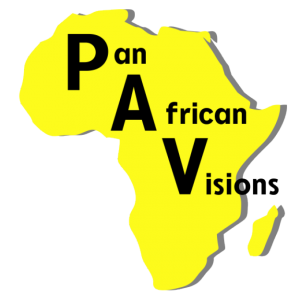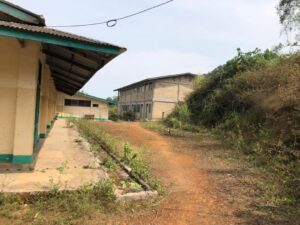Kente: The History and Origin of Ghanaian Famous Cloth
April 11, 2020Here is a an interesting piece for our Easter Saturday, to take minds off the current global crises with Covid-19.
The world entered a new decade a few months ago. It is safe to say that like the ten years that went by, the upcoming ten years will be the game changer in every aspect of our life from lifestyle to travelling and much more. Just as technology is penetrating our lifestyle more and more, many people carry a solid opinion that somehow we are moving away from our cultures and traditions. Here, we present the history and origin of the famous kente cloth.
Many Boomer parents would argue that their millennial sons and daughters don’t know much about their roots and traditional norms or the past that shaped them. It might be valid for a lot of things that we have readily incorporated in our lives and swayed away from the past. However, there is still one significant aspect of our lives that has kept traditions alive, and technology has indeed helped in doing so.
Fashion is one such industry that stems from the past. Incorporates into the modern contemporary fusion that fashion today has become and people not only adorn those clothes with pride but take more interest in even knowing about them.
History of Kente Cloth
The country that comes to mind when we are reminded of this bright-colored, woven fabric is none other than Ghana. Ghana, officially known as the Republic of Ghana, is a country located along the coast of the Gulf of Guinea, paving with the Atlantic Ocean in the subregional area of West Africa. Majorly known for the infamous Ghanaian Kente Cloth, the country is widely acclaimed.
Although upon the research, you would find several stories that describe the origin of the Kente cloth, yet the recurring theme revolves around the Akan ethnic group from the Ashanti region of Ghana.
- So the Ashanti legend lore goes as:
“In the 17th century, there were two brothers who came from the village of Bonwire. One day, they came across a spider spinning a web. Fascinated by the tiny creature’s natural habitat, they were much intrigued by the intricate beauty of the spider’s web. Returning home by the evening, the brothers were eager to recreate the spider’s web by their own hands. The brother started working on their masterpiece and, after the hard work of many days, ended up with a beautiful piece of fabric that was so unique and woven with a single thread just like a spider’s web. The new discovery was so fascinating to the nearby villagers just like the spider’s web had been to the brothers, that they shared this story with the then ruler of the Asante Kingdom. The cloth became so special that the kingdom adopted it as a royal piece of clothing reserved for special occasions. But as the production increased and more people became accessible to the cloth that they could trade it, Kente became a royal mascot for Ghana and has been known especially ever since.”
The Technique of Making Kente
The Kingdom of Ashanti royalty (currently prevalent throughout Asanteman) – “Kente, known as nwentoma in Akan, is a type of silk and cotton fabric made of interwoven cloth.” Originally as it was reserved for the royalty, the cloth was restricted to being made how it came into being. However, once the trade took off, there was no stopping as to how weavers popularized it. It continued to bloom as a symbol of wealth, high social status, and association with culture.
So you must still be wondering that it is after all just a cultural symbol, something historically relevant for the people of Ghana, so what?
What exactly is the reason that makes Kente so special?
The answer lies in the fabric itself. ‘Kenten,’ the Akan word for basket, came to be given the name for the fabric known as Kente due to how it was weaved. Produced on a special loom, it is modified to create narrow strips of cloth. It is the art and technique of the weaver’s hands that creates the long strips of fabric that measure up to four inches wide. Working around to create intricate geometric designs as the weaver continues to weave – the cloth becomes unique with every piece. Once the weaver has enough number of long, narrow, and unique strips, the strips are then sewn together to make a full-sized clothing piece.
The original Kente was not colorful. Shocking, isn’t it? Yes, the original Kente was black and white and much mundane to people’s dismay. But with time as the weavers started producing a range of bright colors to be incorporated and the cloth became more celebratory in its nature, mass production and adoption as a cultural symbol, more and more colors were integrated that can be seen used today.
Hence, it is safe to say that Kente is not only unique for its design but for both weaving and sewing as well as colors.
Raw Material & Preparation of Kente cloth
Amongst the many different types of raw material available locally, for production of the best export quality of the fabric, Kente uses the following raw material:
- Cotton – grown and harvested in the north of Ghana
- Silk – the thread originally used for weaving but very expensive back then and to this day
- Rayon – the synthetic fiber as an economical alternative
- Metallic thread – to add shine to the cloth
The usual way by which the villagers have sworn to is hand spinning the thread. As the villagers who perform the spinning find their hands to be more in tune with the spinning than a spinning cone, they agree that it is easier to control the cloth design.
Then the next step from there is the dying process. The dye that is used to change the color of the threads is also a local for Ghana as it can be made by grinding the bark and leaves of the local trees. The Ghanaians use this home-made local dye as the colors produced do not fade away. In contrast, the alternate synthetic dyes from China or Japan do fade away, reducing the quality of the fabric.
The final and the primary step is the weaving itself. Most weavers are men that use a wooden horizontal loom for separating and guiding the threads to take its unique shape. As the weaver’s hands work through, those looms insert weft threads between the warp threads to create motifs in the cloth. All of which is attributed to having symbolic cultural significance for the people of Ghana. You can buy essay online for reading about the significance of Kente designs.
Hidden Meaning Behind the Design of Kente cloth
The Kente cloth itself is so special and is accorded to a great deal of respect. Similarly, the cloth designs are just as powerful cultural symbols that are the genuine product of Ghanaian history and philosophy. Each design is not only different visually but has its own name and significant meaning behind it that reflects its value for the Ghanaian culture. Some of the more prevalent designs are:
1. Fatima Nkrumah
The first president of Ghana after independence from Britain in 1957 married an Egyptian woman for unity. Her name was Fatima Nkrumah, and so the design was named after the literal first lady of Ghana to represent avoidance of racism and discrimination.
2. Zigzag
A word for word meaning for the cloth that life is not a smooth journey. There may be many obstacles and ups and downs on the way.
3. Mako Maso Adeae (my heart’s desire)
The tradition is to get this cloth woven for your lady love and leave it at her door as a nonverbal message of expressing your love and proposition for marriage.
Other than these three, many different designs may convey and representative of the message for good health, wealth, strength, and prosperity. Kente can be found in age-old Asante’s shrines to the deities as a prevalent marker of their spiritual power.
Modern African Take on Kente
There are manufacturers across Ghana and China that are replicating the Kente design. Instead of the long and traditional process of Kente cloth production, the African wax fabric is readily available and cheap. This makes it more affordable than the original Kente cloth that is handwoven, whereas the replica is machine printed. It is also one of the major reasons why Kente is now a globally popular piece of clothing fabric.
It has paved the way for many young African fashion designers or fashion designers that take inspiration from historical and cultural norms. Fashion designers across borders have now embraced Kente and experimented with both the woven as well as the print version of the cloth, making it more widely acclaimed for other uses than just attire. Now Kente can be seen as blankets, bedsheets, pillowcases, and placemats, etc.
As you may have understood by now that the modern take on Kente has also made it affordable, so it is no longer reserved just for royalties. Now anybody who can afford it can wear it. Many other traditional norms associated with the production of Kente like hand spinning and weaving and not cutting the cloth has also been dropped. Now not only is the fabric spun, weaved and sewn using a machine, but it is also cut to be shaped into accessories like wallets, handbags, and modern halter tops, printed t-shirts, and dresses.
In Conclusion;
Kente is more than just a piece of cloth. It is an iconic visualization of history, philosophy, ethics, religion, and social values. It is a product of love and power, and no matter what story is the original one for the creation of Kente, one thing is for sure that the next time you see a spider’s web, you would inevitably be reminded of Kente.
Author: Claudia Jeff
The post Kente: The History and Origin of Ghanaian Famous Cloth appeared first on Ghana Talks Business.
Ghana Talks Business
Source : African Media Agency (AMA)








